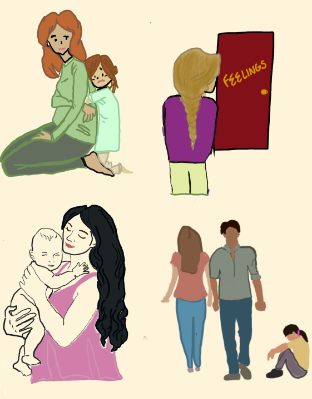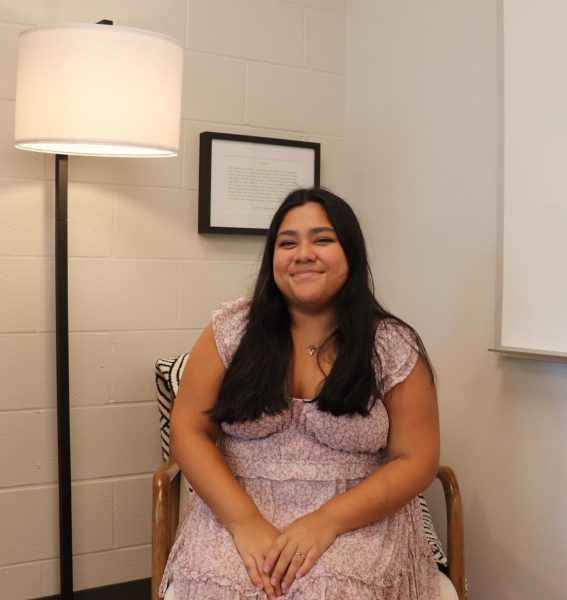Nature or Nurture?

April 21, 2023
Attachment types begin to develop the moment a child is born. Attachment types may change with age due to how relationships influence a child’s life. As many people may assume, the first two years of an infant’s life are the most crucial for forming healthy attachments with people. During this time, children will start to understand what a “caregiver-child” relationship SHOULD look like.
Babies will begin to create preferences for their primary caregiver over others as early as six weeks old. This preference is because the child builds trust that these primary caregivers will attend to their needs. For example, when an infant cries for affection, food, or attention, the caregiver runs to help. In some tragic cases, the caregiver may completely ignore the heart-wrenching cries of the helpless child.
A child’s template for attachment is rooted in how well the people closest to them attend to their needs. This initial window is crucial for a child to realize if other people are trustworthy and dependable.
We can initially thank John Bowlby for the birth of the attachment theory. Bowlby believed that a child’s emotional problems might stem from how they interact with their environment growing up. For example, Bowlby realized that a newborn not only requires their mother for food but also desires an interpersonal relationship. Bowlby stated that “when a child’s immediate need for a secure attachment bond is not met,” the child will feel threatened and cry out for their caregiver. If such a pattern develops where the caregiver continuously ignores the child’s needs and desire for a connection, the infant will develop social and emotional issues.
There is a classification system within the theory. There are four attachment types.
- secure attachment
- Anxious attachment
- Avoidant attachment
- Disorganized attachment
Secure attachment
- If a person has a “secure attachment,” they are known for trusting easily, and they understand their own emotions and the emotions of others.
- They crave emotional intimacy and efficiently communicate their thoughts and feelings.
- They can handle conflict without trouble or outbursts
- They feel comfortable in relationships and feel comfortable on their own. They do not require a relationship to make them comfortable.
- For a child to have “secure attachment,” they must
- Feel safe and secure in their relationships
- They must feel seen and understood
- They must feel comforted, soothed, and reassured in troubling situations
- They must feel valued
- They must feel as though they can explore many endeavors without judgment. They must feel supported through their endeavors as well.
- For a child to have “secure attachment,” they must
Anxious attachment
- This attachment type can be identified in people who have an extremely sensitive nervous system
- An individual with this attachment type may struggle with hypervigilance for something going wrong.
- One of the most horrifying events they may experience would be being abandoned by a loved one.
- This anxiety can stem from inconsistent parenting, where the caregiver would be attentive at times yet dismissive at other times.
- These are the main signs of an individual with an anxious attachment
- Favorable views of others but a critical view of themselves
- Extreme difficulty with receiving criticism or rejection
- They put immense effort into relationships
- They are known for their catastrophic thinking. They often picture things going terribly wrong.
- These are the main signs of an individual with an anxious attachment
Avoidant attachment
- This type is also known as the dismissive attachment style
- This is often present in individuals who downplay their emotions or even dismiss them completely
- More often than not, these people are highly independent and self-reliant. In contrast, their greatest fear may be intimacy and vulnerability.
- This type may stem from caregivers who are not emotionally available for their children and cannot tend to the emotional needs of the children.
- TELLTALE SIGNS
- Extremely self-reliant and independent to the point of assuming it is a weakness to ask for help.
- Positive self-view alongside a critical view of others
- Maintaining a safe distance from others when they attempt to connect emotionally
- They struggle to seek help and support from others
- TELLTALE SIGNS
Disorganized attachment
- Also known as the “fearful-avoidant” type
- They are typically identified as individuals who have experienced childhood abuse or trauma
- They are known for demonstrating inconsistent behavior, and they struggle with trusting others
- This blooms from caregivers who became a source of fear for the child instead of safety.
- The main signs are
- Struggling with intimacy and building trust
- Swinging between avoidant and anxious behavior
- The main signs are
As you skim through the types and the history, do you begin to envision people in your life who fit these molds? Do you think of yourself and connect with one of the styles? Maybe you start to believe you are a melding of two styles with a few consistent signs of each. Whether or not you see yourself in one of these types, I hope this article benefitted you and made you understand just how crucial the initial years of your life are.
SOURCES:
https://www.attachmentproject.com/attachment-theory/
https://www.attachmentproject.com/blog/adoption-attachment-theory/

